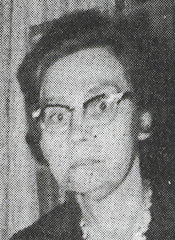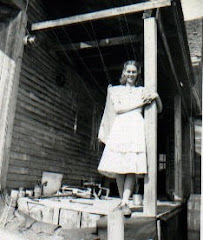As reported in the Bangor Daily News on March 17, 1973
Column One by Bob Taylor
If Cliff Sloane were an ordinary man, then tomorrow might be just an ordinary day.
But the former captain of detectives with the Bangor Police Department is anything but ordinary. Twenty years of police work have left scars that retirement and a new career as a bank employe can never completely erase.
Tomorrow, March 18, will mark the eighth anniversary of the “Bangor House Strangling,” probably the most bizarre unsolved crime in local police annals.
Cliff Sloane will sit down for possibly the thousandth time and leaf through his personal files on the crime. He will patiently study and analyze the countless facts that he has long since committed to memory.
He will inevitably come to the conclusion that he has known the identity of the murderer for these long eight years. He will also admit sadly to himself that he still lacks the evidence to get a conviction in a court of law.
Like a grim game of chess, his opponent’s king stands vulnerable and unprotected but the one right move that might end the contest remains maddeningly just out of reach.
The Bangor House case is especially galling to Sloane since it represents the only bit of unfinished business in an unusually successful career as an investigator.
The beaten and molested body of 54-year-old Effie MacDonald, a chambermaid at the hotel, was found in an unoccupied room on the third floor. She had been strangled with one of her own nylon stockings.
Police immediately noticed the similarity between the crime and the shocking list of atrocities committed by the so-called “Boston Strangler” which were just hitting a peak in 1965.
The special “Strangler Squad” organized by the Massachusetts Attorney General’s Office immediately dispatched investigators to Bangor. They quickly determined that the Bangor murder, although equally as appalling as those in Massachusetts, was definitely not the work of the “Boston Strangler.”
That left local police with the task of finding a home-grown killer. The case wasn’t entirely lacking in clues, but the investigation soon leveled off to the dull, plodding job of chasing down one false lead after another.
It was the kind of work at which Sloane excelled. He had built his reputation on a methodical, tireless machine of a man whose patience and bulldog tenacity literally wore down his opponents.
Sloane definitely liked being a policeman. He thrived on the endless hours and found excitement in the chase. In short, he enjoyed his work which in turn gave him an air of confidence. Never before had he committed his energies to a case and lost.
The results of his labors are recorded in the secret files that still tantalize police investigators after eight years.
Sloane says that he has identified the killer. The fact that he lacks the evidence to present to a grand jury is only a temporary setback, as far as he is concerned.
There is not statute of limitations for the crime of murder which means the case will never be closed unless it is someday marked “solved.”
Sloane is certainly no dreamer and not the kind of man who would try to fool himself, yet he speaks of the case with a practical confidence.
“It’s just a matter of keeping on the pressure,” he explains. “One of these days one of us will crack and it won’t be me.”
------
SOURCE: Bangor Daily News, Bangor, Maine, March 17, 1973
Saturday, November 24, 2007
Subscribe to:
Post Comments (Atom)



.jpg)
.jpg)



.jpg)
1 comment:
2 persons were in the building that were ? after the murder 1 denied being there it was thought the murder happened as a result of her walking in on these 2 catching them in the act
Post a Comment